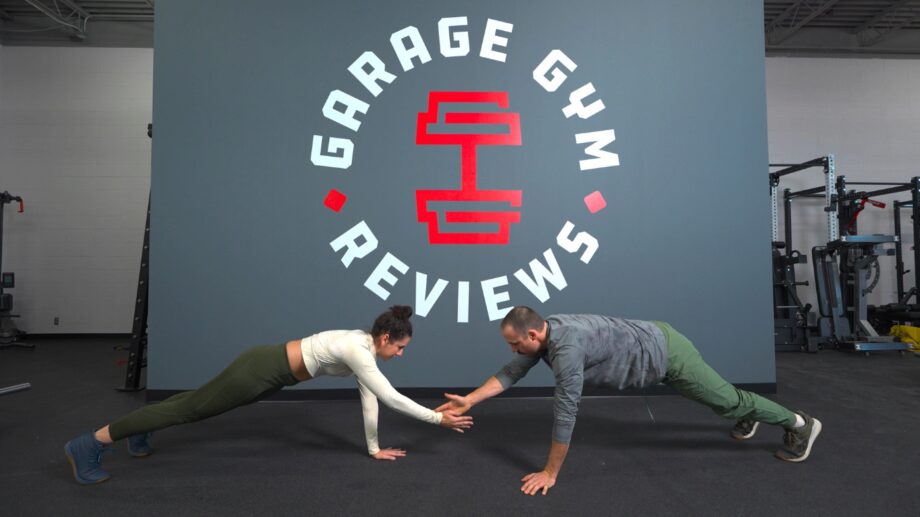We test and review fitness products based on an independent, multi-point methodology. If you use our links to purchase something, we may earn a commission. Read our disclosures.
Some people find working out alone to be pure bliss. It’s their “me time,” and they want to keep it uninterrupted and stay totally zoned in. I totally understand that feeling, and I love working out alone, too.
But, I also enjoy working out with a partner! I love doing workouts specifically created for two people to tackle: I find it to be a great bonding experience and it makes for a challenging training session. Partner workouts are also great for days when motivation is lacking or when you just want to switch things up.
RELATED: How to Be a Good Spotter
Working out with a partner comes with many benefits and challenges, which we detail here. Plus, we provide two full partner workouts for you and a friend to try.
For this guide, we asked expert contributor Amanda Capritto, CPT, CES, CNC, CF-L1, CSNC, to provide some insight on why partner workouts should be a part of your routine, how to get the most out of your partner workouts, and two full workouts for you to try.
Full Partner Workouts To Try
First, let’s take a look at the workouts. Amanda designed these two partner workouts to get you and your training buddy started on the right foot. If you’re a CrossFit enthusiast, you’ll probably recognize some of these moves, like burpee over barbell. Partner CrossFit workouts aren’t that much of a stretch as these are typically done in a group setting.
Partner Workout 1
- 5 Rounds for Time:
- 30 Partner Plank Taps (each partner)
- 20 Partner Leg Throws (10 each partner)
- 10 Burpee Over Partner (5 each partner)
- 5 (each leg) Partner Pistol Squats (20 if modifying to air squats)
- Instructions:
- Perform 30 Partner Plank Taps (15 each hand), resting as needed
- Then, perform 20 Partner Leg Throws, switching as needed
- Then, perform 10 Burpees Over Partner, switching as needed
- Then, perform 5 Partner Pistol Squats on each leg, together
Plank Taps (High Fives)
How To:
- Both partners assume the high plank position
- Position yourselves far enough apart that you can both extend your arms fully in front
- In the plank position, both partners lift one arm and high-five each other
- Alternate arms until you complete 30 total reps (15 each arm)
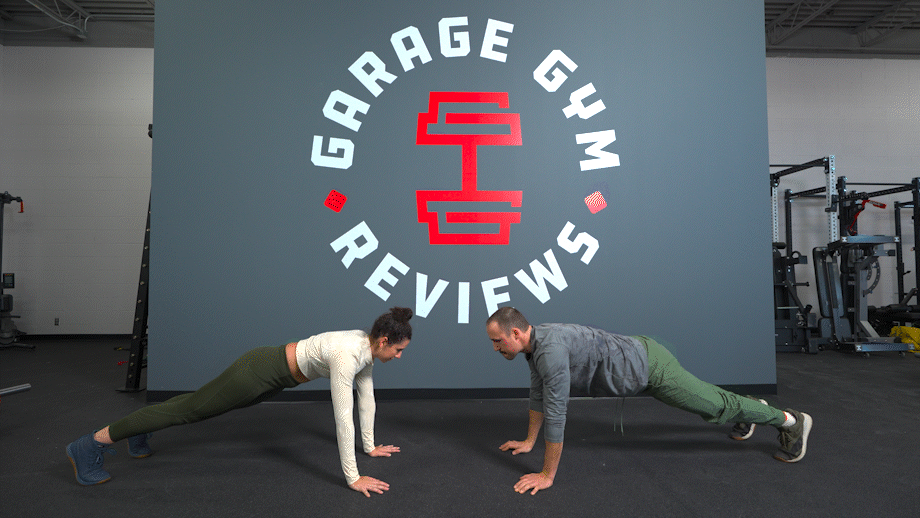
Partner Leg Throws
How To:
- Partner 1 lies face-up on the ground and positions feet pointing toward the sky
- Partner 2 holds Partner 1’s ankles
- Partner 2 pushes Partner 1’s legs toward the ground
- Partner 1 uses core strength to lift legs back to the starting position
- Each partner performs 10 reps. Switch as needed
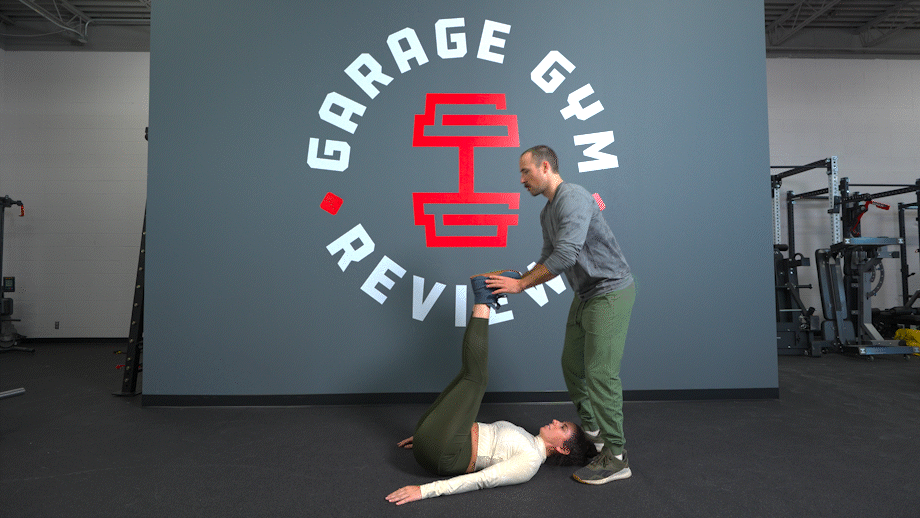
Burpee Over Partner
How To:
- Partner 1 lies on the ground
- Partner 2 performs a burpee lateral to Partner 1
- Partner 2 jumps over Partner 1 to complete the rep
- Switch as needed and continue until each partner competes five reps
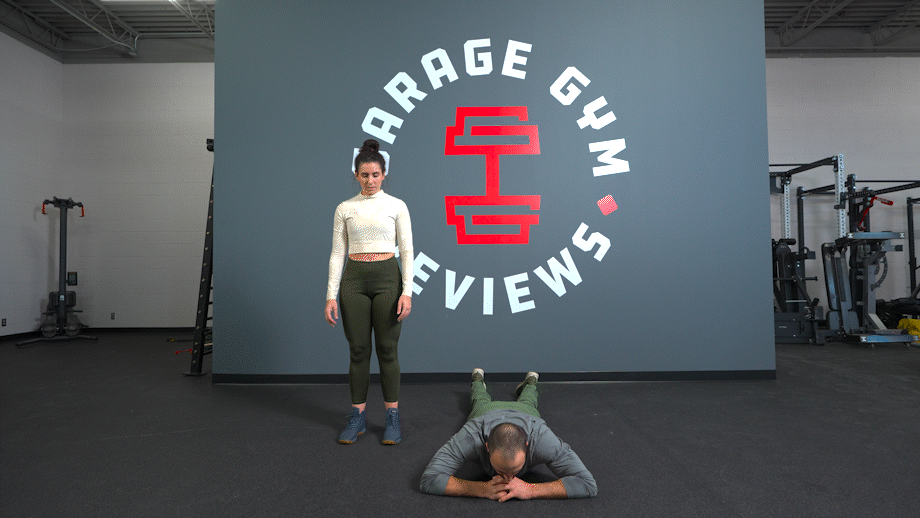
Partner Pistol Squat (Mod: Synchro Air Squat)
How To:
- Partners start standing, facing each other and joining hands
- Perform five pistol squats on each leg, using your partner to counterbalance
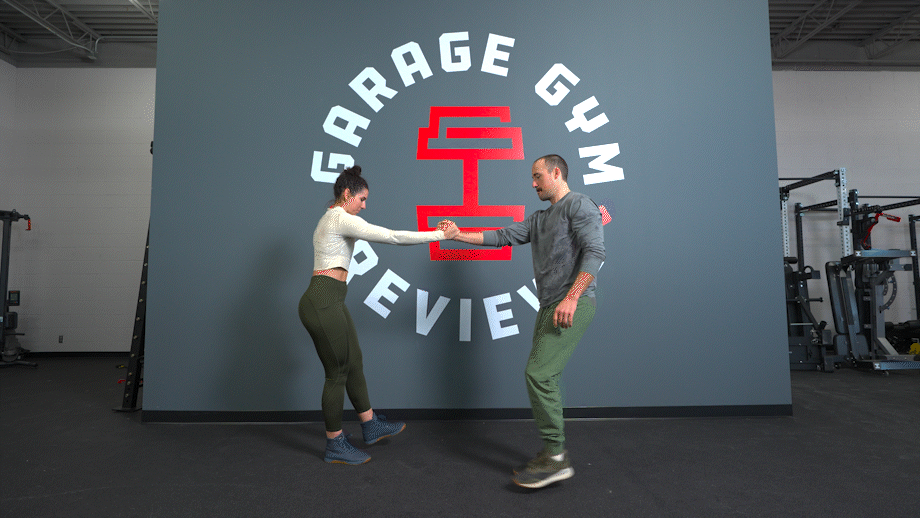
Partner Workout 2
- Every Minute On the Minute (EMOM) for 16 minutes (4 rounds)
- Minute 1: 30 seconds of partner wall-balls
- Minute 2: 30 seconds of U-go, I-go deadlifts
- Minute 3: 30 seconds of synchronized burpees over the barbell
- Minute 4: 30 seconds of partner sit-up tosses
- Instructions:
- Every minute on the minute, perform 30 seconds of the prescribed exercise. Rest for 30 seconds. At the top of the next minute, start the next exercise, and so forth. Complete four rounds of each exercise for a 16-minute workout.
- Equipment needed:
- Two Olympic barbells
- Enough weight plates (preferably bumpers) for both partners to use a challenging load
- One medicine ball
- Abmats or yoga mats for sit-ups
Partner Wall-Balls
How To:
- Partner 1 and Partner 2 stand next to each other facing a wall or wall-ball target.
- Partner 1 performs a wall-ball: Squat with the medicine ball and, upon standing, throw the ball to a target.
- Partner 1 steps away and Partner 2 steps in to catch the medicine ball and perform a wall-ball.
- Partner 2 steps away and Partner 1 steps in to catch the ball. Continue alternating for 30 seconds.
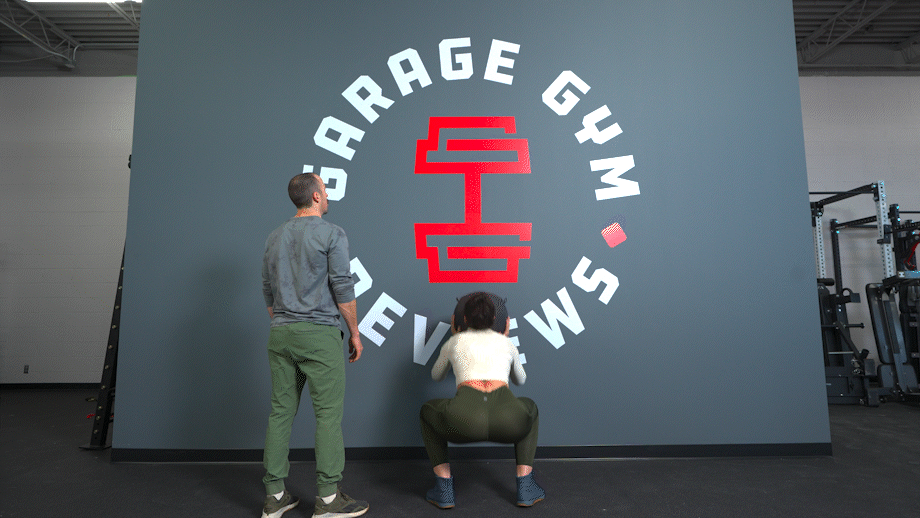
U-Go, I-Go Deadlifts
How To:
- Both partners set up a barbell for deadlifts. Choose a weight you can confidently do at least 15 reps with.
- Partner 1 does one deadlift. As soon as the barbell returns to the ground, Partner 2 does one deadlift.
- Alternate for 30 seconds.
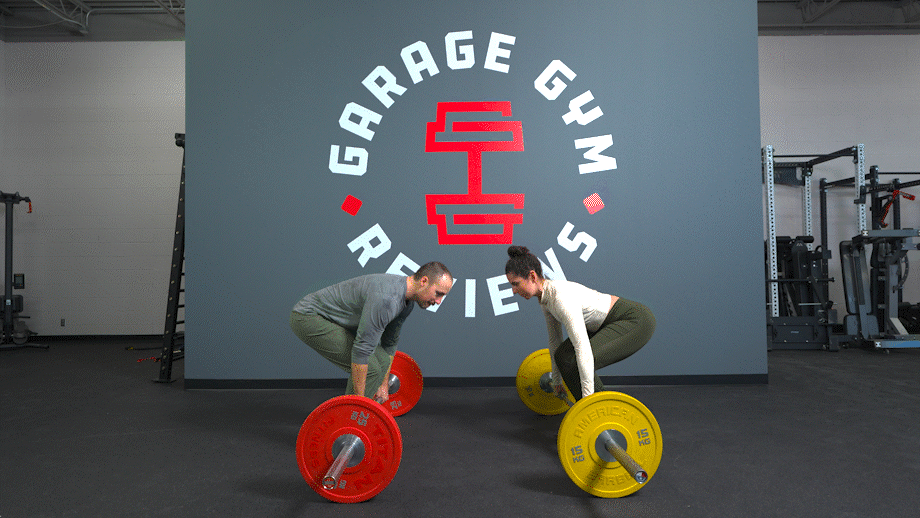
Synchro Burpee Over Bar
How To:
- Both partners perform a burpee lateral to the barbell and hop over the bar.
- Both partners must have both feet on the ground before starting the next rep.
- Continue for 30 seconds.
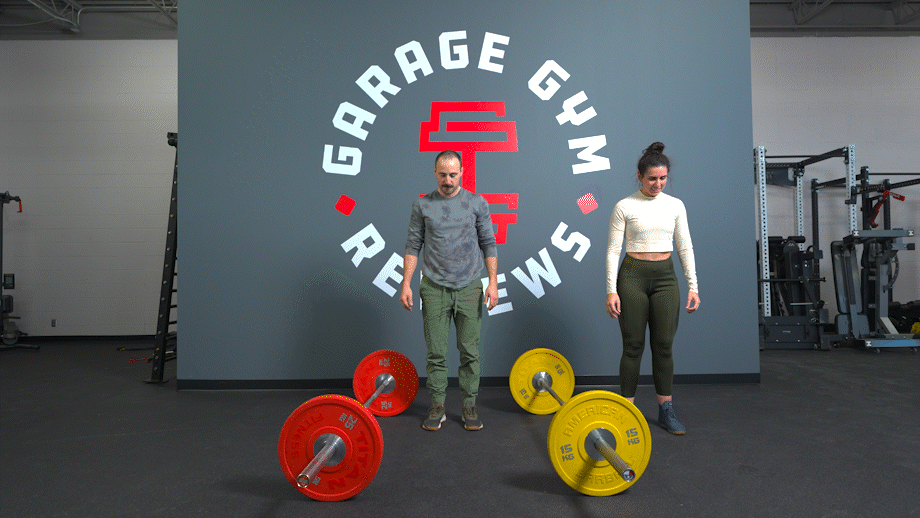
Partner Wall-Ball Sit-Up Toss
How To:
- Both partners lie face-up on the ground with feet pointing toward one another.
- Partner 1 holds a medicine ball and does one sit-up. At the end of the sit-up, Partner 1 tosses the medicine ball to Partner 2.
- Partner 2 catches the ball and does a sit-up, tossing the ball back to Partner 1.
- Continue for 30 seconds.
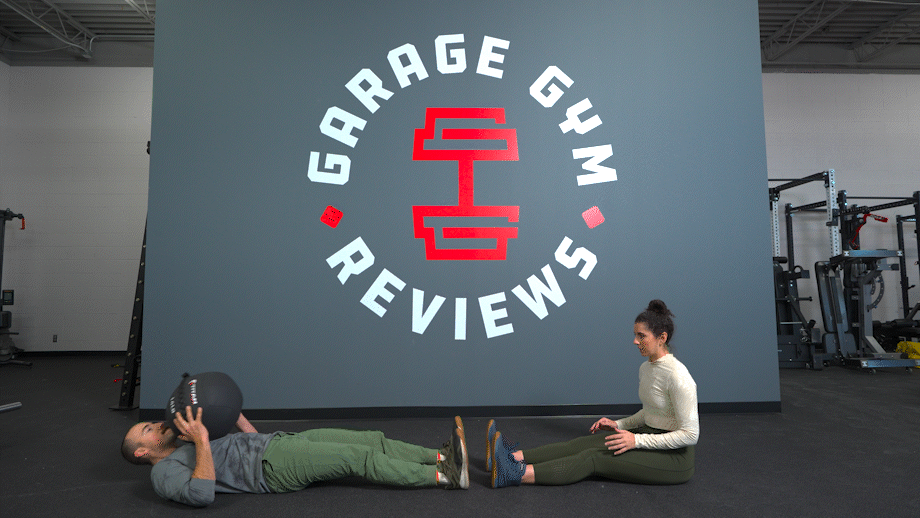
RELATED: Best Olympic Barbell
Benefits of Partner Workouts
All of the usual benefits of working out apply to partner workout, but working out with someone else comes with a few perks.
- Accountability: It’s too easy to let yourself down, but when you’ve committed to working out with a partner, you’re much less likely to bail.
- Consistency: The accountability factor multiplies when you schedule partner workouts on a regular basis. If you struggle with consistency, working out with a partner on a weekly basis is one way to minimize skipping.
- Mentality: Most people are likely to push themselves more during partner workouts than they will while working out alone.
What to Consider During partner workouts
When you exercise alone, you can pretty much do whatever you want. But when working with a partner, it’s helpful to keep these factors in mind.
Your Partner’s Fitness Level
Not everyone has the same fitness level. This simple fact is important to remember when creating partner workouts. “When creating your workout, make sure both partners will be challenged yet safe,” Amanda Capritto, CPT, CES, CNC, CF-L1, CSNC, says. “A good rule of thumb is to choose exercises that have a lot of modification options, as this allows for flexibility even after the workout starts.”
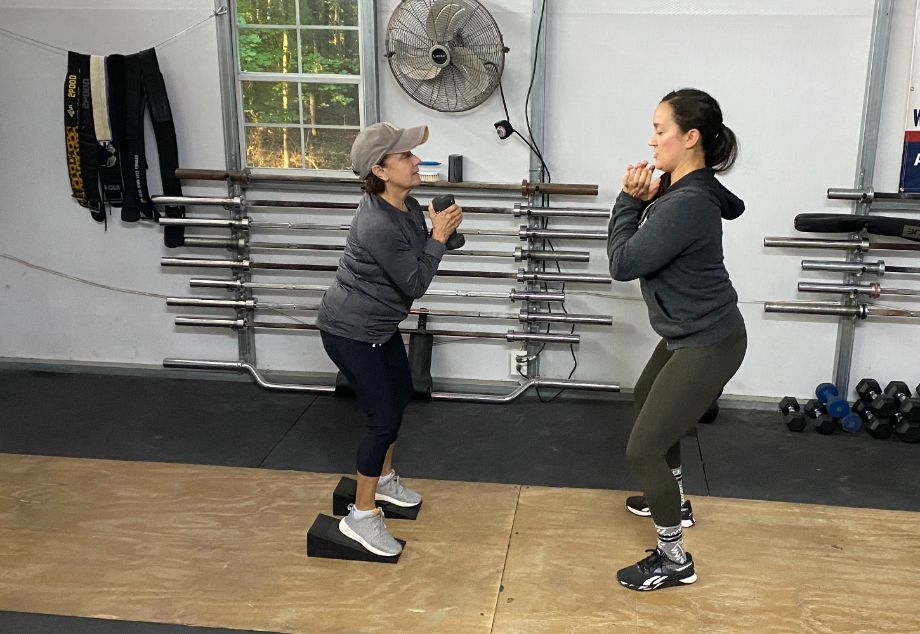
Equipment Access
I might be stating the obvious here, but the equipment you have in your home gym will pretty much dictate the workout you do. If you want to do a running workout, for example, you’ll obviously need a treadmill or ample outdoor space to run. If you want to do a barbell workout, you may need two barbells or to compromise on the weight.
RELATED: Best Treadmills for a Home Gym
Time
As always, time is of the essence. Communicate with your partner beforehand to set a time allotment for the workout—don’t just write up a workout assuming your partner has the same amount of time as you to train.
Pro tip: “When deciding on the time factor, be sure to account for set-up, warm-up, and cool-down time in addition to actual workout time,” Amanda says. “These pre- and post-workout necessities can eat up a lot of time, so it’s important to plan ahead.”
Types Of Partner Workouts
There are a lot of ways to design partner workouts. The versatility is part of what makes them so fun, Amanda shares. She breaks down the main types of partner workouts here.
AMRAP
AMRAP stands for “as many rounds/reps as possible” and the goal is to move as efficiently as you can within a given amount of time. An example of a simple AMRAP is: max air squats in five minutes.
RELATED: AMRAP Workouts
Chipper
A chipper workout is one that has a defined number of reps for several movements where the goal is to “chip away” at the reps. Often, chipper workouts have a declining rep range: for example, 50-40-30-20-10.
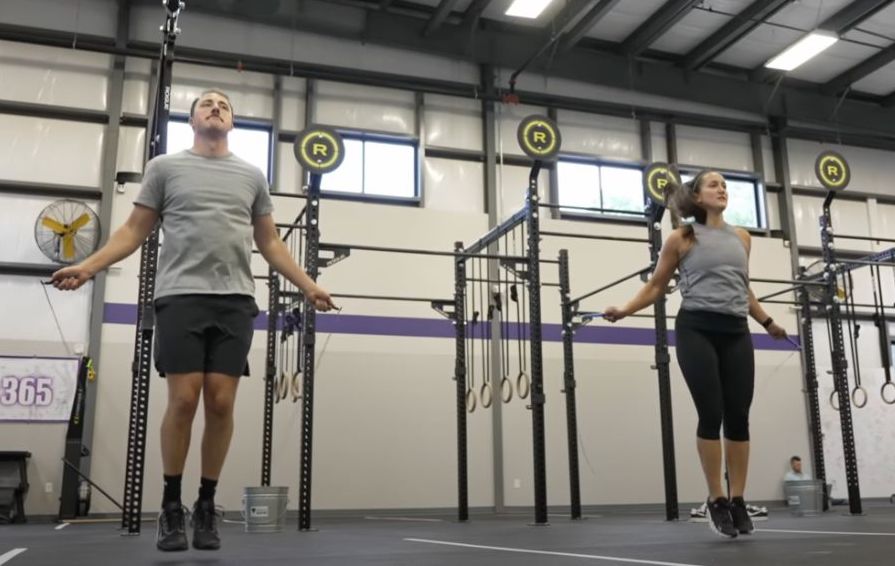
EMOM
EMOM stands for “every minute on the minute” and EMOM workouts involve performing a prescribed number of reps of a given exercise at the start of each minute. You rest for the remainder of the minute after finishing your reps and start again at the top of the next minute.
Rounds For Time
In a “rounds for time” workout, you’re not given a defined time limit; rather, you’re given a workout and the goal is to perform it as fast as you safely can.
Get The Most Out Of Your Partner Workout
Partner workouts are a blast—as long as everything goes well. Keep these things in mind leading up to your next partner workout to ensure smooth operation.
Prioritize Form And Safety
Form and safety are just as important during partner workouts as in individual workouts, if not more so—it’s each partner’s responsibility to keep themself and their partner safe. Here are some tips from Amanda Capritto, CPT, CES, CNC, CF-L1, CSNC, to keep your partner workout hazard-free:
- Remove unnecessary equipment or items from your workout space
- Set up workout equipment in a way that makes sense for the movements you’re doing (for example, align barbells instead of setting them up perpendicularly)
- Avoid working out on wet floors
- Form-check one another on each movement to be done before starting
- Choose weights that aren’t too heavy for the rep ranges
- Modify exercises to match your skill set, even if it means you and your partner are doing different variations
Arrive Prepared
Show up on time and with everything you need to safely complete the workout. Make sure you have plenty of water; that you’re wearing proper cross-training shoes and clothes; you’ve eaten a pre-workout snack or meal; and you have any equipment you need for the workout.
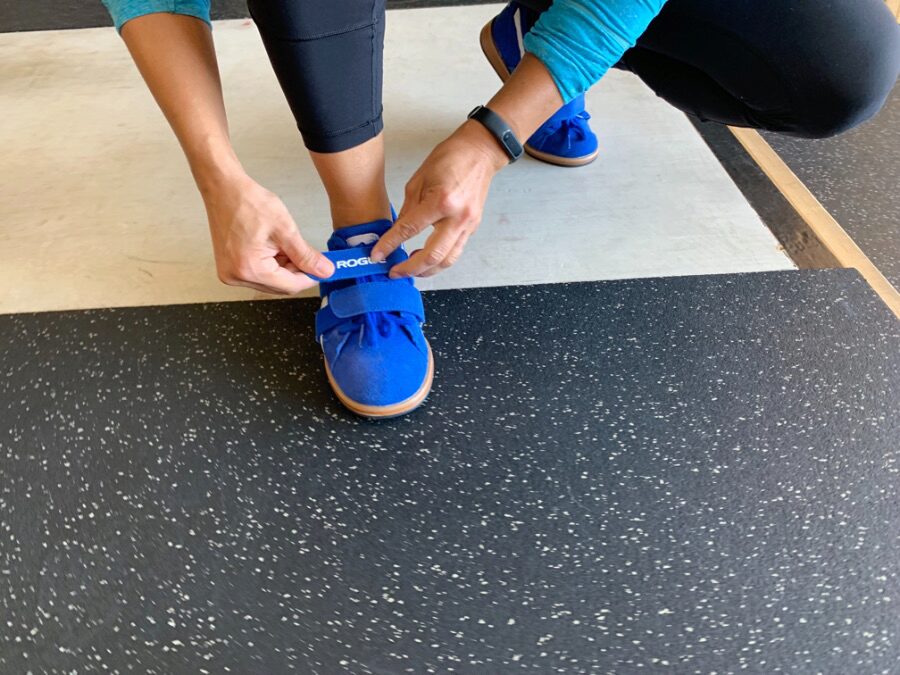
Be There For Your Partner (In The Right Ways)
One of the best things about partner workouts is the extra encouragement. However, remember that not everyone takes encouragement in the same way. For example, some people thrive when they’re shouted at or egged on—others, not so much. “Ask your partner how they like to be cheered on during workouts instead of assuming they enjoy the same type of encouragement you do,” Amanda says. “From experience, I know things can quickly turn sour when partners aren’t on the same page.”
Build Trust
Trust is a big part of making partner workouts successful. Let your partner know you’re there for them and that they can ask for movement modifications and rest breaks without feeling judged. “Both partners should feel safe and excited as the clock ticks down to go time,” Amanda says. “You’re not off to a good start if one or both partners feels like they’ve committed to something too hard or like they can’t ask for help, rest, or modification.”
Partner Workouts: Final Takeaway
The team at Garage Gym Reviews loves partner workouts. They’re a great way to bond with friends and get an extra dose of motivation and accountability. By following the partner workout ideas and tips above, you and your workout partner can have an absolutely epic training session.
Partner Workouts: FAQs
What are exercises couples can do together?
There are so many options for great couples exercises and workouts that can be done in the gym, at home, or outdoors. Amanda Capritto, CPT, CES, CNC, CF-L1, CSNC, suggests four types of workouts that are highly adaptable to your exercise preferences for partner training: AMRAP, Chipper, EMOM, and Rounds For Time.
AMRAP stands for “as many rounds as possible,” with the goal of doing each exercise as efficiently as possible during a time allotment. Similar is EMOM, or “every minute on the minute,” which will see you and your partner performing a set number of reps and resting for the remainder of the minute before starting again.
With rounds for time, you’ll take your exercises and perform them as fast as you (safely) can, with no time limit. The goal here is to best your time during the next workout—or best your partner’s time.
Finally, Chipper takes time out of the equation and has you and your partner “chipping” away at a set number of reps, such as a declining 50-40-30-20-10 rep scheme.
How do I work out with my partner?
Working out with a partner can be just as easy as working out alone if you set aside the time beforehand to discuss things like the duration of the workout, exercise choices, and level of difficulty. Try to find a workout partner with similar preferences or at the same fitness level as you. If not, this isn’t a deal-breaker as long as there is clear communication that some workouts or movements may require extra time and instruction.
If in doubt, many certified personal trainers specialize in training two clients at once or “buddy training.”
Is it good to have a workout partner?
Benefits of having a workout partner include, accountability, consistency if you schedule your workouts in advance, and a better training mentality since you’re more likely to push yourself further than you would training solo.
What is the best partner workout?
The “best” partner workout depends on you and your partners preferences and fitness levels.
Further reading

You might be in limbo debating the lat pulldown vs pull-up. A certified personal trainer explains the similarities and differences, and which one is for you. Read more

This unique protein contains fruits, veggies, and probiotics, but how does it taste? Find out in our Purely Inspired Organic Protein review. Read more

We’ve got eight of the best exercises for your low chest workout. Build muscle and get stronger with these movements. Read more

Our experts have tested the best CrossFit shoes. Our picks have durable and versatile, options that provide a good balance of support and stability. Read more

